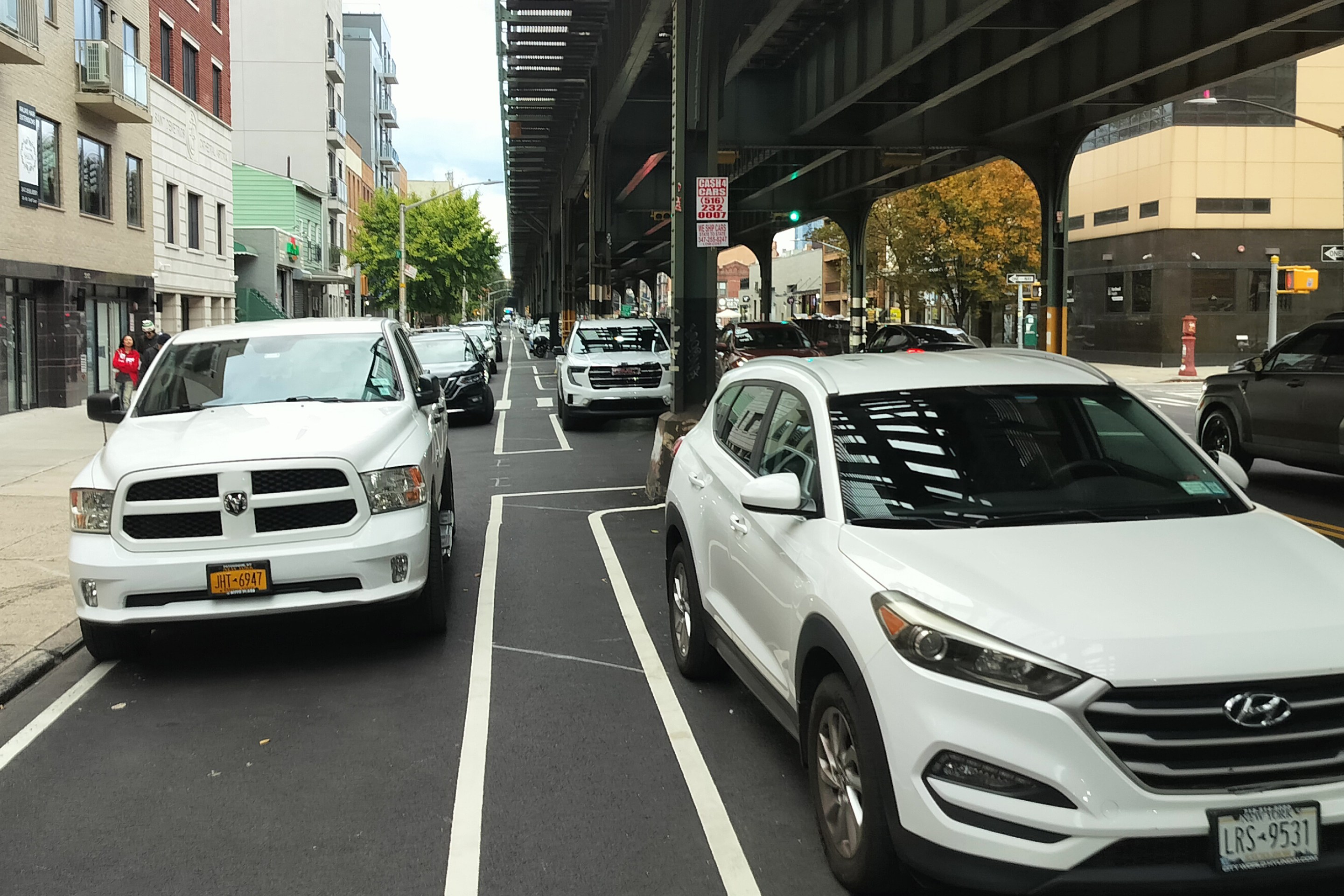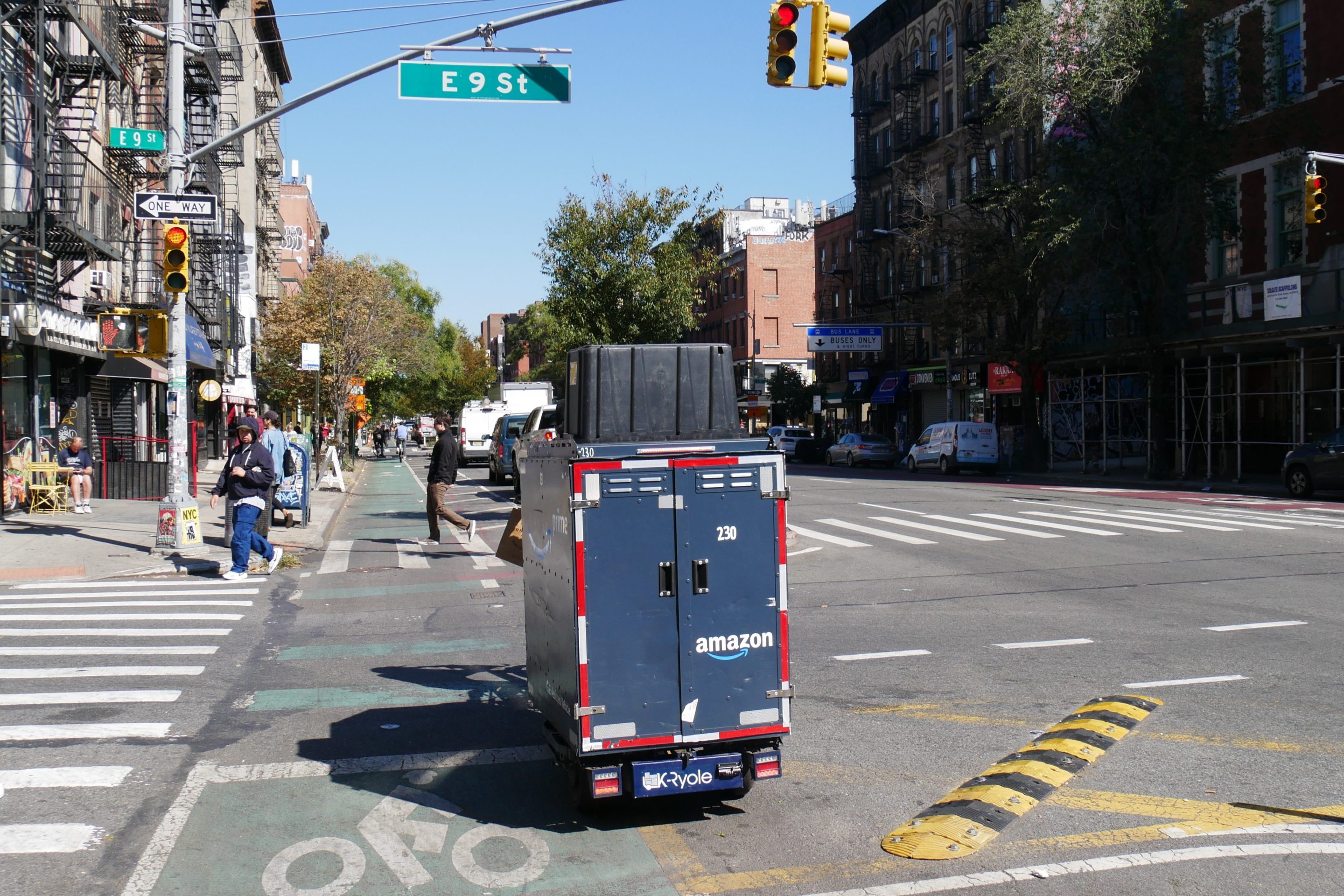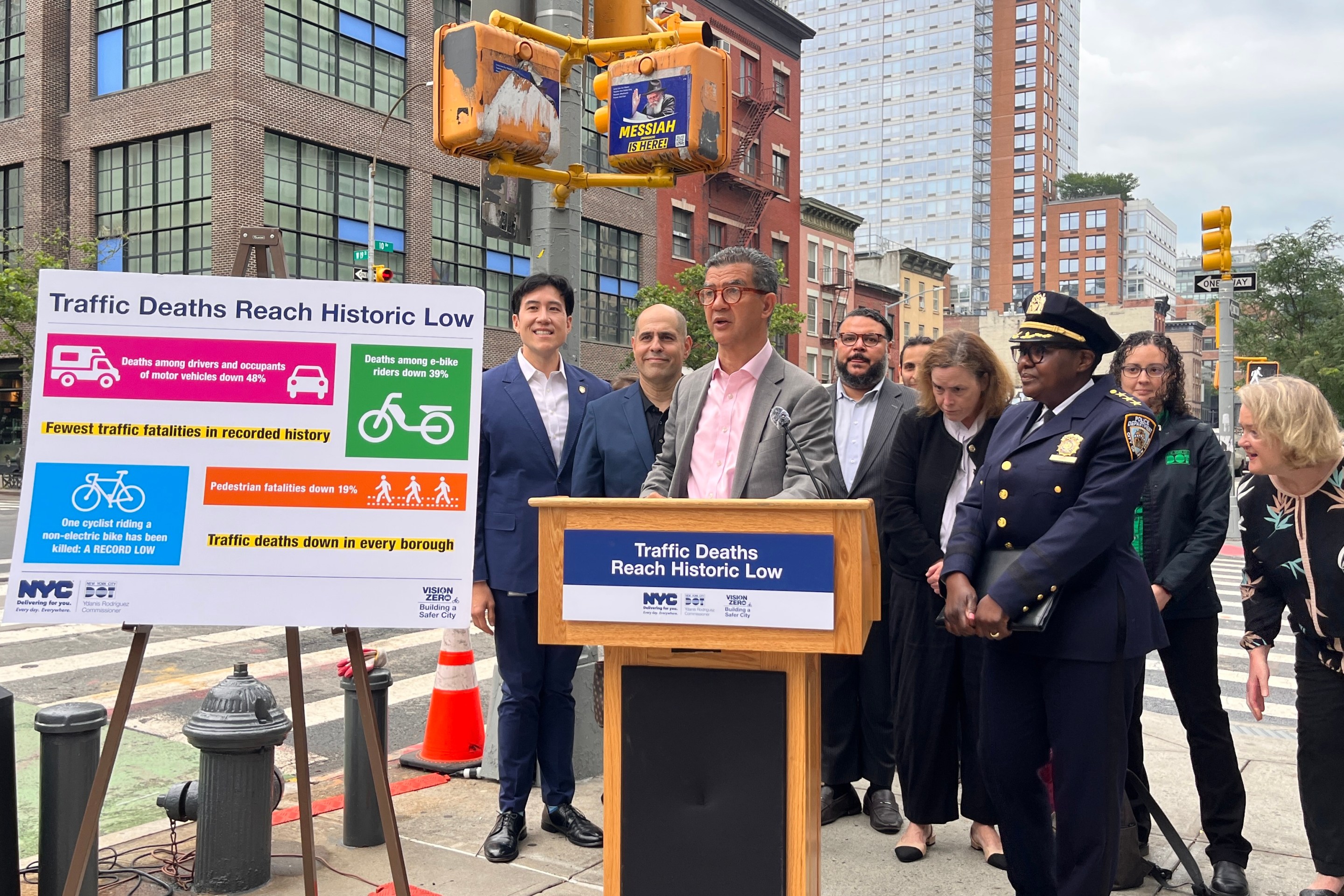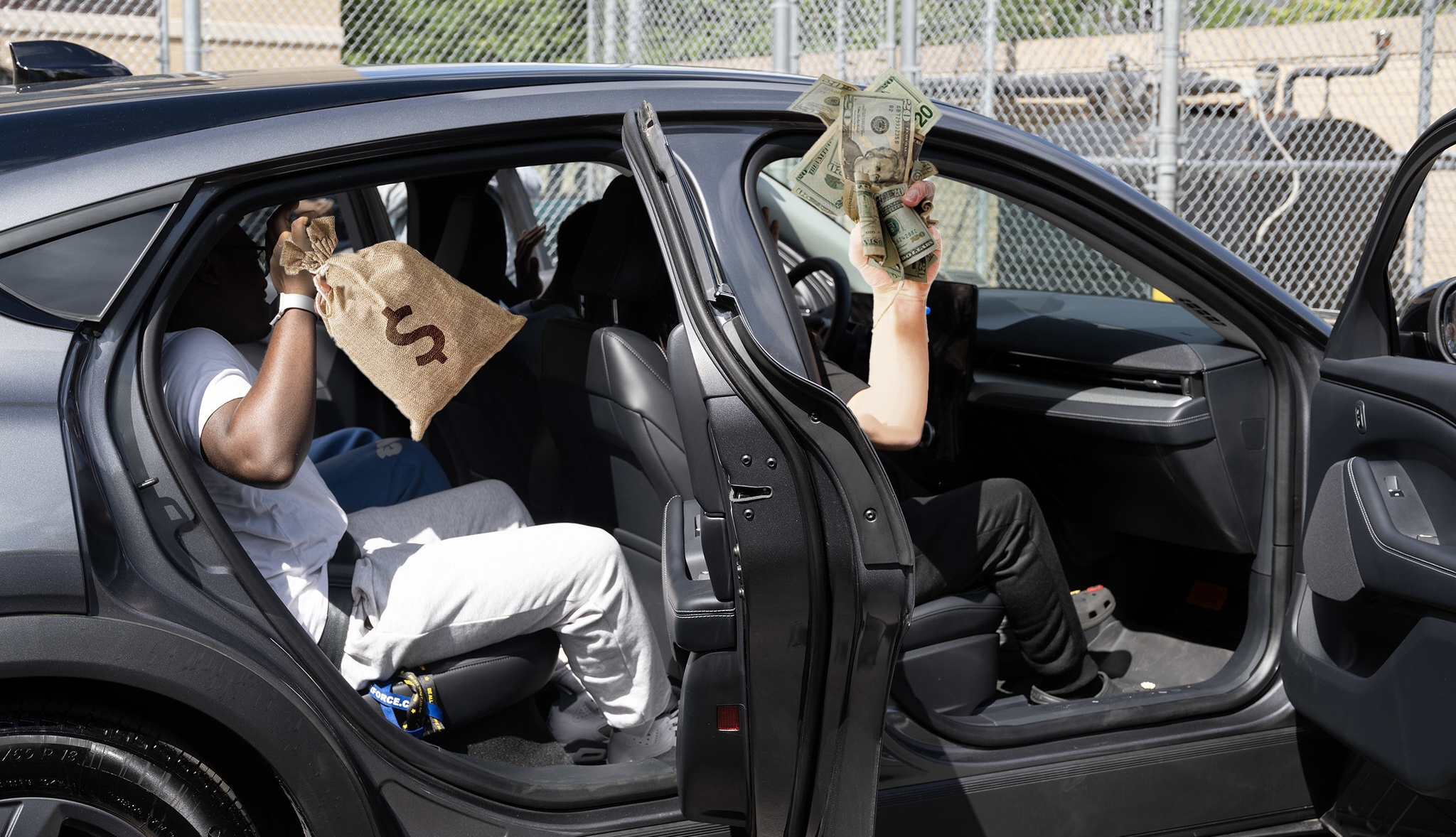With federal transportation funding on track to run dry by May 31, Washington lawmakers are gearing up again to reset national transportation policy... or, if that doesn't work out, to limp along indefinitely under the status quo.

Today President Obama unveiled his opening bid in this process. The $478-billion, six-year plan from the White House includes many of the proposals the administration unveiled last year. Congress didn't advance those ideas then, and with the GOP now controlling both houses, chances remain slim for reforming highway-centric federal transportation policy.
But the White House budget document remains the best summary of the Obama team's transportation policy agenda. The ideas are intriguing even if they're politically improbable.
Here's a look at the highlights [PDF].
The Good
Boosts Transit Funding: Obama proposes a large increase in transit funding, budgeting $23 billion in 2016 and a total of $123 billion to transit over six years. That would represent a 75 percent increase over current levels. The would go toward both expansions and the maintenance and improvement of light rail, BRT, subway, and commuter rail networks.
Promotes State DOT Reform: The Fixing and Accelerating Surface Transportation program would "create incentives" for state DOTs and other transportation agencies to reform how they approach road safety and congestion management. Funded at $1 billion annually, the program would fund initiatives like "distracted driving (safety) requirements or modifying transportation plans to include mass transit, bike, and pedestrian options," the White House says.
Expands TIGER: The Obama budget would increase funding for the popular TIGER program to $1.25 billion annually, up from about $500 million in 2015. TIGER lets cities and local transportation agencies directly access federal funding for their projects through a competitive grant process, allowing for more rapid progress on multi-modal projects like the Indianapolis Cultural Trail.
Prioritizes Bridge Repair: About $5 billion per year would be set aside for fixing bridges and roads that are "deficient" and "pose a safety risk." (Caveat: Depending on how this program is structured, it could be used by states and localities as a backdoor way to pay for highway expansions that are tenuously justified on safety grounds.)
The Bad
More Money for Highway-Obsessed State DOTs: The incentives to reform how state DOTs spend money will need to be very strong, because the budget increases the amount of money distributed to them by about 25 percent, to $50 billion annually. While this is a smaller percentage increase than the boost for transit Obama is proposing, it will mean more money for agencies that still haven't figured out how to kick the highway expansion habit.
No Real Funding Fix: Obama wants to pay for his plan with a one-time tax assessment on corporate foreign earnings -- meaning this is not a renewable funding source, but another stop gap funded by a mechanism that has nothing to do with the transportation system. The proposal is only slightly less gimmicky than the overseas "tax holiday" proposed by Senators Rand Paul (R-Kentucky) and Barbara Boxer (D-California), .
So even at this early stage, all parties have punted on the idea of raising the gas tax, even though with gas prices at remarkable lows, drivers would hardly notice.
The Ugly
Prospects for Passage: While the policy ideas look promising, as long as Congress remains reflexively opposed to the White House, the transportation budget is mostly an exercise in laying out a future agenda, not crafting new legislation.





